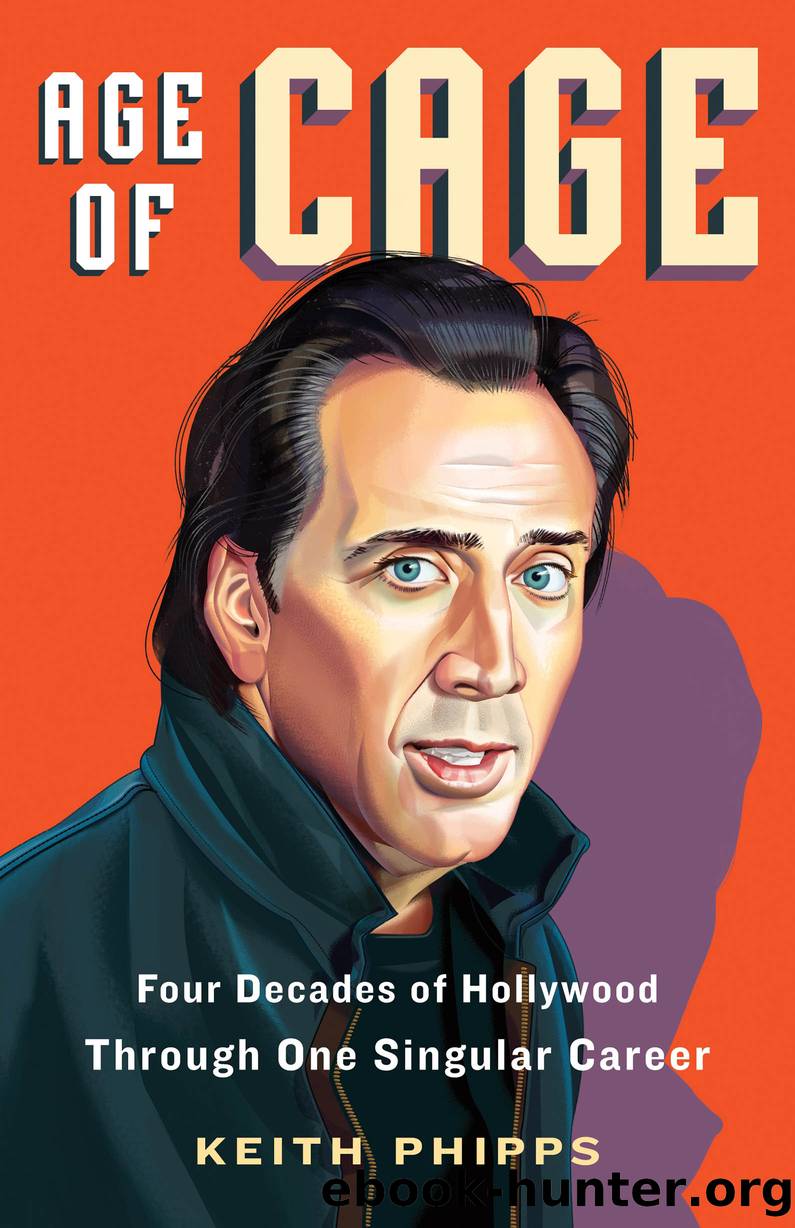Age of Cage by Keith Phipps

Author:Keith Phipps
Language: eng
Format: epub
Publisher: Henry Holt and Co.
* * *
In retrospect, it would look like a peak, both of Cageâs venture into the action genre and of Wooâs time in Hollywood. Where Woo was sometimes seen as the most âAmericanâ filmmaker in Hong Kong, with Face/Off he made the most Hong Kong action film imaginable within the Hollywood system, using all the resources a Hollywood budget would allow to craft a bullet-riddled exploration of virtue and sinfulness while taking elements of the classic action film to their extremes. (Not content to end with a showdown in a church, Woo added a boat fight to make sure audiences went home satisfied.)
In the years that followed, however, it would be the Bay/Bruckheimer approach that prevailed, maximalism without the studied discipline of Woo and other Hong Kong directors, whose upper ranks soon followed Woo to Hollywood but retreated before Woo made his own return. Making a film with Jean-Claude Van Damme became a kind of rite of passage for Hong Kong veterans like Ringo Lam and Tsui Hark, but neither would stick around in the long run; nor would contemporary Ronny Yu, who brought some of the weird lyricism of his Hong Kong work to the horror film Bride of Chucky before departing.
Action films found the Bay aesthetic easier to imitate, if not imitate well. Film scholar David Bordwell groups both Hong Kongâ and Bay/Bruckheimerâinfluenced films under the umbrella of âintensified continuity,â but in the latter, itâs sometimes hard to find any continuity at all. In the decade that followed, what video essayist Matthias Stork would dub âchaos cinemaâ emerged as the default mode. In the years after Bayâs rise, the multiplexes would fill with action films in which, in Storkâs words, âevery shot seems like the hysterical climax that an earlier movie might have spent several minutes building toward.â Some used it well. While Bay struggled to marry this approach to more narrative-driven films like Pearl Harbor, he found a low-ambition, high-reward outlet in the Transformers series. Paul Greengrassâs Bourne films used nausea-inducing handheld work to great effect. One of the pioneers of the form, Tony Scott, thrived and grew as audiences became even more receptive to his rapid-fire assault. Christopher Nolan wove pockets of seeming chaos into a more elegant, classical approach. These were the exceptions, however. Many others took the same shortcuts West took in Con Air, substituting movement for meaning and stimulation for thrills.
Face/Off also found its stars in a kind of imperial phase, both still wrapped in an aura of confidence and goodwill that comes with recent, unexpected, and undeniable triumph. In the years after Pulp Fiction, Travolta could seemingly do no wrong. The public embraced him. Older fans seemed to realize how much they missed having him as a star, but he also won over a new generation of admirers. The occasional disappointment aside, this affection helped make hits of most of the films that followed, a string of successes that stretched from Get Shorty to A Civil Action to the Simon Westâdirected The Generalâs Daughter.
Download
This site does not store any files on its server. We only index and link to content provided by other sites. Please contact the content providers to delete copyright contents if any and email us, we'll remove relevant links or contents immediately.
The Kite Runner by Khaled Hosseini(5081)
Gerald's Game by Stephen King(4571)
Dialogue by Robert McKee(4321)
The Perils of Being Moderately Famous by Soha Ali Khan(4169)
The 101 Dalmatians by Dodie Smith(3451)
Story: Substance, Structure, Style and the Principles of Screenwriting by Robert McKee(3395)
The Pixar Touch by David A. Price(3362)
Confessions of a Video Vixen by Karrine Steffans(3241)
How Music Works by David Byrne(3184)
Fantastic Beasts: The Crimes of Grindelwald by J. K. Rowling(2994)
Harry Potter 4 - Harry Potter and The Goblet of Fire by J.K.Rowling(2984)
Slugfest by Reed Tucker(2937)
The Mental Game of Writing: How to Overcome Obstacles, Stay Creative and Productive, and Free Your Mind for Success by James Scott Bell(2844)
4 - Harry Potter and the Goblet of Fire by J.K. Rowling(2650)
Screenplay: The Foundations of Screenwriting by Syd Field(2572)
The Complete H. P. Lovecraft Reader by H.P. Lovecraft(2514)
Scandals of Classic Hollywood: Sex, Deviance, and Drama from the Golden Age of American Cinema by Anne Helen Petersen(2464)
Wildflower by Drew Barrymore(2442)
Robin by Dave Itzkoff(2383)
